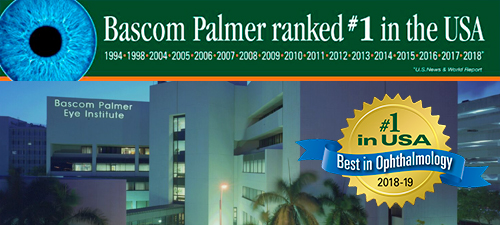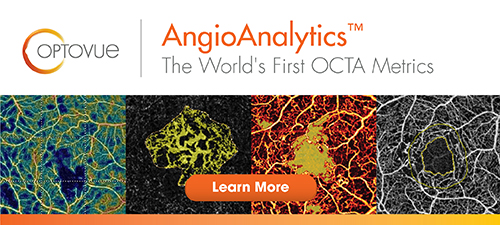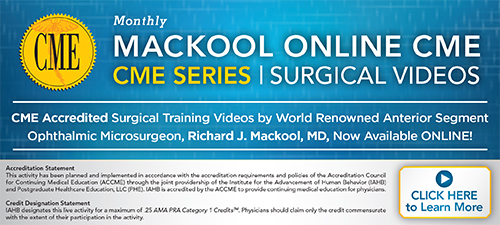FROM THE EDITORS OF REVIEW OF OPHTHALMOLOGY:

Volume 18, Number 37 |
Monday, September 10, 2018 |
|
SEPTEMBER IS HEALTHY AGING MONTH |
|
||||
|
Long-term Changes in the Ocular Surface Post-trabeculectomy Scientists evaluated changes in the ocular surface of individuals post-trabeculectomy, in addition to associations with conjunctival inflammatory gene expression, as part of a single-arm, interventional cohort study performed at a tertiary referral center.
|
|
| SOURCE: Tong L, Hou AH, Wong TT, et al. Altered expression level of inflammation-related genes and long-term changes in ocular surface after trabeculectomy, a prospective cohort study. Ocul Surf 2018; Jun 21. [Epub ahead of print]. |  |
|
Acuity Outcomes Based on Initial Treatment Response in nAMD Researchers explored various methods to assess the early response to vascular endothelial growth factor inhibitors for neovascular age-related macular degeneration, and investigated associations with three-year visual acuity outcomes, as part of an observational study.
|
|
| SOURCE: Nguyen V, Daien V, Guymer R, et al. Projection of long-term visual acuity outcomes based on initial treatment response in neovascular age-related macular degeneration. Ophthalmology 2018; Aug 24. [Epub ahead of print]. |  |

|
|
 |
|
Review of Ophthalmology® Online is published by the Review Group, a Division of Jobson Medical Information LLC (JMI), 11 Campus Boulevard, Newtown Square, PA 19073. To subscribe to other JMI newsletters or to manage your subscription, click here. To change your email address, reply to this email. Write "change of address" in the subject line. Make sure to provide us with your old and new address. To ensure delivery, please be sure to add reviewophth@jobsonmail.com to your address book or safe senders list. Click here if you do not want to receive future emails from Review of Ophthalmology Online. Advertising: For information on advertising in this e-mail newsletter or other creative advertising opportunities with Review of Ophthalmology, please contact sales managers James Henne or Michele Barrett. News: To submit news or contact the editor, send an e-mail, or FAX your news to 610.492.1049 |





